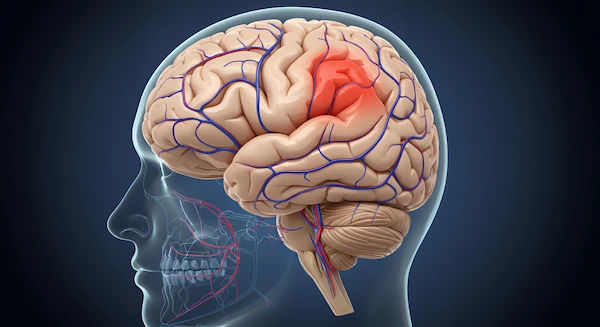Understanding Phantom Pain: Causes and Treatments
Know about phantom pain, causes, symptoms, and management through medicines, lifestyle changes, etc and how to prevent them and more.

Written by Dr. Dhankecha Mayank Dineshbhai
Reviewed by Dr. Shaik Abdul Kalam MD (Physician)
Last updated on 5th Nov, 2025

Phantom pain is a puzzling and often distressing condition where individuals experience pain in a body part that is no longer there, typically after an amputation. Though it may sound strange, this phenomenon is very real and affects many people who have undergone limb removal.
If you or someone you know is dealing with phantom pain, understanding its causes and treatment options can help manage the discomfort and improve quality of life.
What is Phantom Pain?
Phantom pain refers to the sensation of pain in a limb or body part that has been amputated. It can feel like burning, stabbing, tingling, or even cramping in the area where the limb once was. Some people also experience phantom limb sensation, which is a non-painful feeling that the missing limb is still present.
While phantom pain is most common after arm or leg amputations, it can also occur after the removal of other body parts, such as breasts, teeth, or even internal organs.
Causes of Phantom Pain
The exact cause of phantom pain is not fully understood, but researchers believe it is linked to changes in the brain and nervous system after amputation. Here are some possible explanations:
1. Nerve Damage – When a limb is removed, the nerves that once carried signals from that limb to the brain get cut. These nerves may continue sending faulty signals, tricking the brain into feeling pain.
2. Brain Rewiring – The brain’s sensory cortex, which processes touch and pain signals, may "remap" itself after amputation. This can cause mixed signals, leading to phantom sensations.
3. Psychological Factors – Stress, anxiety, and depression can sometimes worsen phantom pain.
4. Stump Issues – Problems in the remaining part of the limb (the stump), such as nerve irritation or poor blood flow, can trigger phantom pain.
Consult a pain specialist for the best advice
Symptoms of Phantom Pain
Phantom pain varies from person to person. Some common symptoms include:
Burning, throbbing, or shooting pain in the missing limb
Tingling or itching where the limb used to be
Feeling like the limb is still attached (phantom sensation)
Pain triggered by weather changes, stress, or touching the stump
The pain can come and go or be constant. For some, it fades over time, while others may experience it for years.
How to Manage Phantom Pain?
While phantom pain can be challenging to treat, several approaches can help reduce discomfort:
Medical Treatments
Medications – Doctors may prescribe pain relievers, antidepressants, or anticonvulsants to help manage nerve-related pain.
Mirror Therapy – This involves using a mirror to create the illusion that the missing limb is still present, helping the brain "relearn" movement and reduce pain.
Nerve Stimulation – Techniques like TENS (Transcutaneous Electrical Nerve Stimulation) or spinal cord stimulation can block pain signals.
Physical Therapy – Exercises and massage can improve blood flow and reduce discomfort in the stump.
Lifestyle and Home Remedies
1. Relaxation Techniques – Meditation, deep breathing, and yoga can help lower stress, which may reduce pain.
2. Regular Exercise – Staying active improves circulation and overall well-being.
3. Proper Stump Care – Keeping the stump clean and well-fitted with a prosthetic (if used) can prevent irritation.
4. Distraction – Engaging in hobbies or social activities can take the mind off the pain.
When to See a Doctor?
If phantom pain is severe, persistent, or affecting your daily life, consult a healthcare provider. They may recommend advanced treatments like nerve blocks or surgery in rare cases.
Can Phantom Pain Be Prevented?
While it’s not always possible to prevent phantom pain, some studies suggest that preemptive pain management before amputation (such as nerve blocks) may reduce the risk.
Final Thoughts
Phantom pain is a real and often misunderstood condition, but with the right care, it can be managed effectively. If you or a loved one is struggling with phantom pain, don’t hesitate to seek medical advice.
Consult a pain specialist for the best advice
Consult a pain specialist for the best advice

Dr Darshana R
General Physician/ Internal Medicine Specialist
15 Years • MBBS, MD, DNB (Internal Medicine), Diploma in Allergy, Asthma and Immunology , Fellowship in Diabetes
Bengaluru
Apollo Clinic, JP nagar, Bengaluru

Dr. E Prabhakar Sastry
General Physician/ Internal Medicine Specialist
40 Years • MD(Internal Medicine)
Manikonda Jagir
Apollo Clinic, Manikonda, Manikonda Jagir
(150+ Patients)

Dr. Anand Kumar G S
Pain Management Specialist
12 Years • MBBS, MD, AFIPM, FIPP
Chennai
Apollo Hospitals Greams Road, Chennai
(25+ Patients)
Dr. Hari Prasad Kasturi
Pain Management Specialist
9 Years • MBBS, MD (ANAESTHESIOLOGY)
Chennai
The Guest Hospital, Chennai

Dr. Samir Basak
Pain Management Specialist
15 Years • MBBS, MD Anaesthesiology
Kolkata
Dr. Samir Basak's Chamber, Kolkata
(25+ Patients)




